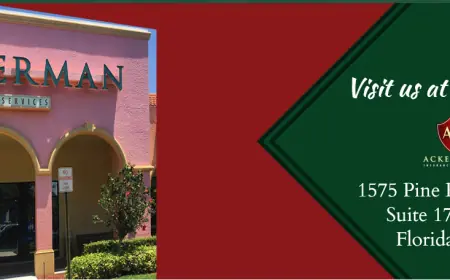How West Scotland’s Lifestyle Shapes Its Property Market

West Scotland is a region filled with breathtaking landscapes, charming towns and a unique way of life. People are drawn here for its balance of natural beauty, culture and accessibility. This distinctive lifestyle doesn’t just make it a pleasant place to live; it directly influences the kinds of properties people want and the way the market behaves. Understanding these lifestyle factors can help both homebuyers and investors make informed decisions.
Natural Beauty as a Driving Force
One of the most powerful elements shaping West Scotland’s property market is its scenery. From rugged coastlines to serene lochs and rolling hills, the environment offers a daily connection with nature. Buyers who long for outdoor pursuits like sailing, hiking and cycling see this as a major attraction. As a result, properties close to water or with panoramic views tend to command premium prices.
This natural appeal also drives demand for second homes and holiday cottages. Many people from other parts of the UK and abroad are purchasing here to enjoy weekend retreats or longer stays, creating a steady flow of buyers interested in character properties.
Community Spirit and Cultural Life
The sense of community in West Scotland is another reason the region’s lifestyle influences the property market. Towns and villages host farmers’ markets, craft fairs, music festivals and sports clubs, creating a friendly atmosphere for residents. For families, retirees and remote workers alike, the idea of belonging to a supportive local network adds to the appeal.
Because of this, homes in vibrant villages with active community centres and local events often attract higher interest than those in more isolated areas. Estate agents report that buyers frequently ask about social activities, schools and community resources before making offers.
Heritage and Architecture
West Scotland’s history is visible everywhere – in stone cottages, Victorian terraces and converted mills. This heritage gives the housing stock a distinct character. Buyers who value authenticity are drawn to these traditional buildings, which often feature thick walls, fireplaces and unique layouts.
At the same time, there’s demand for modern housing developments offering energy efficiency and contemporary design. This duality means the market serves both those who want to preserve history and those seeking new-build convenience.
Accessibility and Transport Links
Although West Scotland feels wonderfully remote, it’s surprisingly well connected. Regular train services, good roads and ferry routes make it easy to commute to Glasgow and other urban centres. This accessibility enables professionals to live in a peaceful environment while still maintaining city careers.
Properties near major transport links or within easy reach of stations and ports tend to see faster sales. This has led to new developments springing up in areas once considered purely rural, broadening the scope of the market.
Work–Life Balance and Remote Working
The rise of flexible and remote working has increased demand for homes in scenic locations. People who previously needed to live in large cities now have the option to base themselves in places that improve their quality of life. West Scotland offers exactly that – a slower pace, cleaner air and beautiful surroundings.
Consequently, the market has seen a boost in buyers seeking properties with home office space, strong internet connectivity and outdoor areas for relaxation. These lifestyle preferences directly influence what sells quickly and at what price.
Economic Factors and Local Industries
West Scotland’s economy combines tourism, renewable energy, agriculture and small business enterprises. This diverse base creates employment opportunities and encourages younger populations to stay or relocate. A steady workforce supports both owner-occupier and rental markets.
For investors, this environment is attractive because it suggests stable demand. Rental yields can be particularly good in tourist hotspots and university towns, where short-term lets and student accommodation are in high demand.
Exploring Opportunities
For anyone thinking about buying, exploring
is the first step to understanding the range of homes available. From traditional cottages to waterfront apartments and new family houses, the market reflects the region’s diversity. This variety allows buyers at different stages of life to find something that suits their needs and aspirations.
Sustainability and Eco-Friendly Living
Environmental awareness is another lifestyle factor shaping the property market. More buyers want homes with renewable heating, good insulation and low carbon footprints. West Scotland’s natural resources and community ethos make it an ideal place for eco-friendly developments.
Properties that meet these criteria can attract premium prices and sell more quickly, showing how lifestyle values translate directly into market behaviour.
The Role of Tourism
Tourism plays a huge part in the region’s economy and housing market. Popular destinations such as Oban, Fort William and the Isle of Bute attract thousands of visitors each year. This has created a healthy market for holiday lets and second homes.
Investors who understand seasonal demand can benefit from both short-term rental income and long-term appreciation. Local councils also encourage responsible tourism, which supports sustainable growth rather than overdevelopment.
Schools and Family Life
For families moving to West Scotland, access to good schools and childcare is a top priority. Many towns have well-regarded primary and secondary schools, and this drives demand for houses in particular catchment areas.
Because of this, family-sized homes with gardens and proximity to schools often sell quickly. Estate agents frequently highlight educational options in their marketing to attract parents.
Healthcare and Services
Healthcare access is another element of lifestyle that shapes the market. Areas with hospitals, clinics and easy links to specialist services are more attractive to older buyers and those with medical needs. This influences both pricing and speed of sales in certain locations.
Similarly, proximity to shops, leisure facilities and public amenities makes a property more desirable, reflecting how everyday lifestyle needs drive market patterns.
Opportunities for Landlords
The rental market is an integral part of West Scotland’s housing scene. Students, seasonal workers and young professionals create a steady stream of tenants. Investors who want to participate in this market benefit from professional management.
Using
ensures properties are maintained to a high standard, tenants are supported, and regulations are met. This helps keep the rental sector stable and attractive, further shaping the overall property landscape.
Future Trends
Looking ahead, several trends are likely to influence the region’s property market. These include continued interest in energy-efficient homes, growth of remote working, and increased demand for wellness-oriented living spaces. West Scotland’s lifestyle aligns perfectly with these preferences, suggesting ongoing strength in the market.
Developers who integrate community spaces, green infrastructure and digital connectivity will be best placed to meet future demand.
Balancing Tradition and Innovation
One of West Scotland’s strengths is its ability to blend tradition with modernity. Buyers can choose between heritage properties with character or sleek new builds with the latest technology. This mix allows the market to serve different tastes and budgets.
It also creates opportunities for renovation and redevelopment, which can add value and preserve local charm at the same time.
Case for Long-Term Investment
For long-term investors, West Scotland offers a compelling story. Steady demand, limited supply in the most desirable areas and a strong sense of place all support value retention. While property prices may fluctuate in the short term, the region’s lifestyle benefits are enduring.
This makes it attractive for people looking not only for a home but also for a secure investment that aligns with their personal values.
Making an Informed Choice
Anyone considering a move or an investment should spend time in the region to experience its lifestyle firsthand. Visiting local markets, walking along the coast and speaking with residents provide valuable insight beyond statistics.
This hands-on approach ensures that when you choose a property, it matches both your practical needs and your desired way of life.
Conclusion
West Scotland’s lifestyle – with its natural beauty, strong communities, cultural richness and growing connectivity – has a profound impact on its property market. Each element, from outdoor recreation to schooling, shapes buyer demand and property values.
By understanding these factors, you can navigate the market more effectively, whether you’re seeking a family home, a holiday retreat or an investment opportunity. With a mix of traditional charm and modern convenience, West Scotland remains one of the UK’s most intriguing regions for property buyers and investors alike.
What's Your Reaction?
 Like
0
Like
0
 Dislike
0
Dislike
0
 Love
0
Love
0
 Funny
0
Funny
0
 Angry
0
Angry
0
 Sad
0
Sad
0
 Wow
0
Wow
0















































